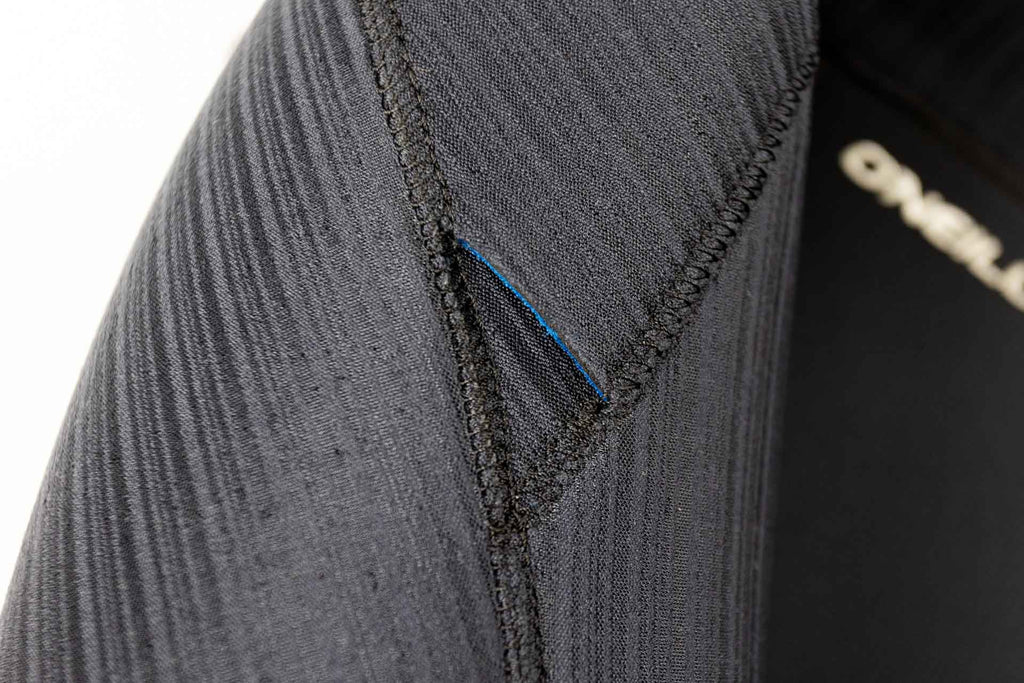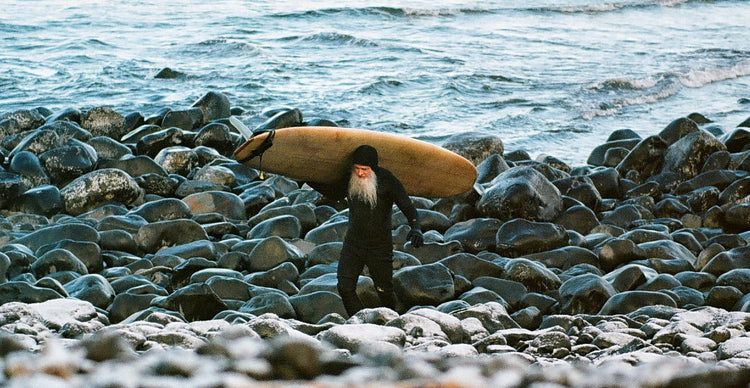We’re sure you’ve heard a lot of strange things about wetsuits, and sometimes it’s not easy to tell what’s fact and what’s fiction. Here is our list of common misconceptions and myths we hear about wetsuits.
Wetsuits Keep You Dry
This is one that a surprising number of people believe to be true. Wetsuits are designed to let water in, then keep that water in, letting your body heat it up, thus keeping you warm. Dry suits keep you warm and dry; wetsuits keep you warm and wet. After all, they are called wetsuits!
Wetsuits Give You Rashes
In the past wetsuits did not fit as well, but now with their improved, formfitting designs and newer, less abrasive materials like polypropylene, you will find they are far less likely to give you a rash, as long as you get one that fits properly. If for some reason you do find yourself getting a rash, there is always the trusty rash guard to solve that problem.
I Need a Dry Suit for Surfing
Dry Suits will keep you warm and dry, yes. What you may not know is that Dry Suits are made to be loose-fitting, unlike wetsuits which are form-fitting. This results in a good amount of drag, and the last thing you want to worry about is a suit that is aiding the ocean in holding you under and dragging you back while paddling out.
Internal Taping Makes a Wetsuit Warmer
This one is pretty common and understandable. The thing is, when you get a brand-new wetsuit, the seams are completely sealed; thus, the internal taping doesn’t necessarily increase the warmth of the suit. When it really matters is later in a wetsuit's life when the glue on the seams starts to deteriorate, and the seams start to leak. Once this happens, the Internal Tape acts as a backup seal, thus keeping the suit from leaking and keeping you warmer.
Hooded Wetsuits Are Uncomfortable
Quite a few people complain that a wetsuit with a built-in hood is uncomfortable. It is true that hood sizes on wetsuits can vary, making them seem too tight; however tight when you are trying a suit on in the shop or anywhere out of the water might be just right when the suit is wet and especially after it loosens up from multiple uses.
All Wetsuits Are Created Equal
Not exactly. There is a lot to a wetsuit, and considering the price of a wetsuit can range from $100 to over $600, it would be absurd to not put the proper thought into your wetsuit purchase. Wetsuits come in a wide range of thicknesses, from 2mm to 6mm. Some come without seam tape, some come with seams fully taped. Some are glued and blind stitched, and some are flatlock stitched. Every wetsuit manufacturer has multiple types of neoprene they use throughout their wetsuit lines with different properties of durability and stretch. Some wetsuits have special internal linings that can make the suit warmer, dry faster, and slide on easier. The list goes on.
Back Zip Wetsuits Are Better Than Chest Zips – Or Vice Versa
Back Zips and Chest Zips both have their pros and cons, and when it comes down to it, it’s personal preference. Back Zips are easier to get in and out of because the zipper is much longer and opens up the suit much more. Chest Zips have a small zipper that is more difficult to get in and out of; however, because the zipper is across the chest area and not on the back, this adds flexibility for paddling. Chest Zips are less prone to flushing when duck diving, but some may argue they are more prone to a complete flush when getting pummeled in big surf or doing cartwheels down the face of a wave.
My Wetsuit Doesn’t Fit
We know how to fit people into wetsuits, and we’ve seen it time and time again when people think that the wetsuit doesn’t fit properly. If you have never worn a wetsuit before, you might not be sure about your wetsuit fit, and you may even think it fits wrong. What you should know is…
- Wetsuits are meant to be form-fitting; you don’t want loose folds of neoprene or large pockets of air or water in your wetsuit.
- Your wetsuit will feel tight when you put it on, but it will loosen up considerably in the water.
- There is a proper way to put a wetsuit on. Many people try to put their arms in before the suit is fully pulled up, resulting in the sense that the suit is too small or doesn’t fit properly. Don’t get ahead of yourself, and take it slowly. Make sure your knee pads are over your knees, then make sure the groin of the suit is pulled up as far as possible. Next, work on the torso until the entire suit is pulled up near your armpits and is smoothed out for the most part; then, you’re ready to tackle the arms. This will make it much easier to put on.
- Don’t put your wetsuit on backwards! If the zipper runs horizontal across the suit, then it is a chest zip and goes in the front. If it is a long vertical zipper with a long pull tab on it, then it is a back zip and goes in the back.
Dive Wetsuits Work Great for Surfing
For the divers out there that want to use their dive suits for surfing, there’s a few things to know. First of all, dive suits are cut differently than surfing wetsuits. Divers use their arms less and their legs more. That is, kicking with their arms behind themselves. Therefore, dive suits are cut to allow warmth more, and not so much for performance movements.
Surfing wetsuits are cut with the arms and legs stretched out to maximize movement. In addition, extra panels, more flexible neoprene, certain stitches, and things like fluid seam welds are used. This is not to say that surfing wetsuits are not meant to keep you as warm. Choosing the right millimeter suit for the water temperature should be considered, along with other materials like the internal lining.
Also, because diving wetsuits are meant to go deep underwater where there is extreme pressure, the neoprene used is much tougher, resulting in a less flexible suit. If you were to take a regular wetsuit for surfing down to a depth of 20 meters, it would come up flat as a pancake, and it will have lost all its water absorption capabilities. Basically, it’s safe to say that dive suits are not cut out for surfing.
It’s OK to Dry Your Wetsuit in the Dryer
We strongly urge you to not do this. Drying your wetsuit in the dryer will not only ruin your suit, but it also voids the warranty. Please don’t do it!
Wetsuits Stink
Wetsuits only stink if you don’t take care of them. Just like a stinky pair of socks, you will need to wash your wetsuit from time to time. It is best practice to wash your wetsuit in fresh water after each use, then hang it to dry away from direct sunlight.
Wetsuits Last Forever
There is a common misconception that wetsuits will last for many years while being used daily, when in fact they do not. In our experience, if you use your wetsuit regularly (say four times a week), then a wetsuit will last you about a year. This is of course a rough estimate, and you may be able to use that year-old wetsuit on warmer days, but it isn’t going to be as watertight, and thus not as warm.
Wetsuit Sizing is the Same as Clothing Sizing
Wetsuit sizing is not related to clothing or dress sizes. Please check the size charts or give us a call to make sure you’re getting the right size. Also keep in mind that wetsuits fit differently from brand to brand. Some brands run taller, shorter, slender, or wider, etc… compared to other brands.
Wetsuit Sizing is Different in Different Countries for the Same Brand.
Although clothing and shoe sizing are different in other countries, wetsuit sizing is the same in all countries for major brands like Rip Curl, O’Neill, Patagonia, etc.…
My New Wetsuit Has a Hole

This is actually a drain hole which is made to keep your suit from filling up with water. Basically, there are two layers of neoprene that overlap inside of an entry system, water gets in there and is funneled out through the drain hole. This way you rarely get a shock of cold water on your skin.
